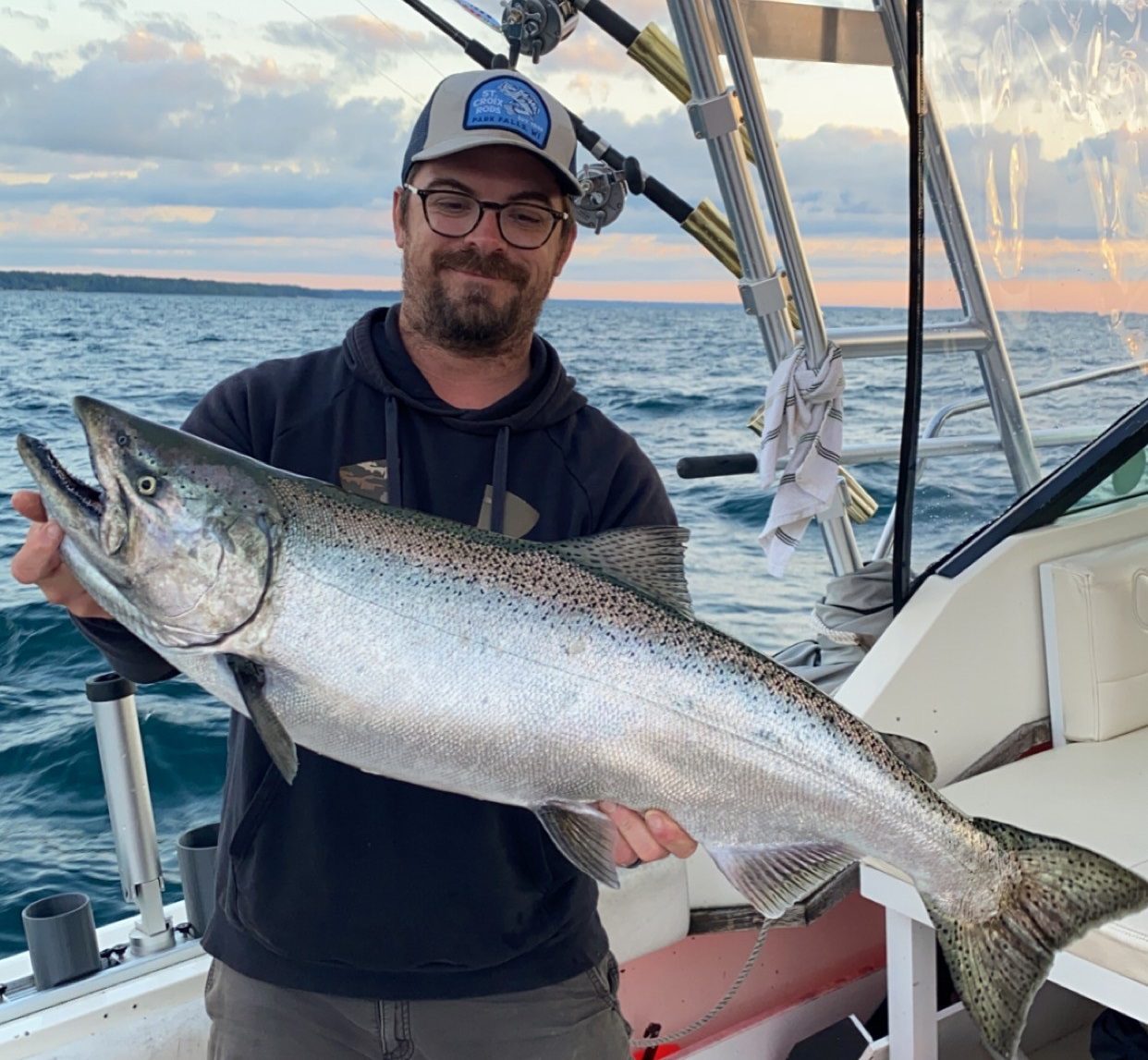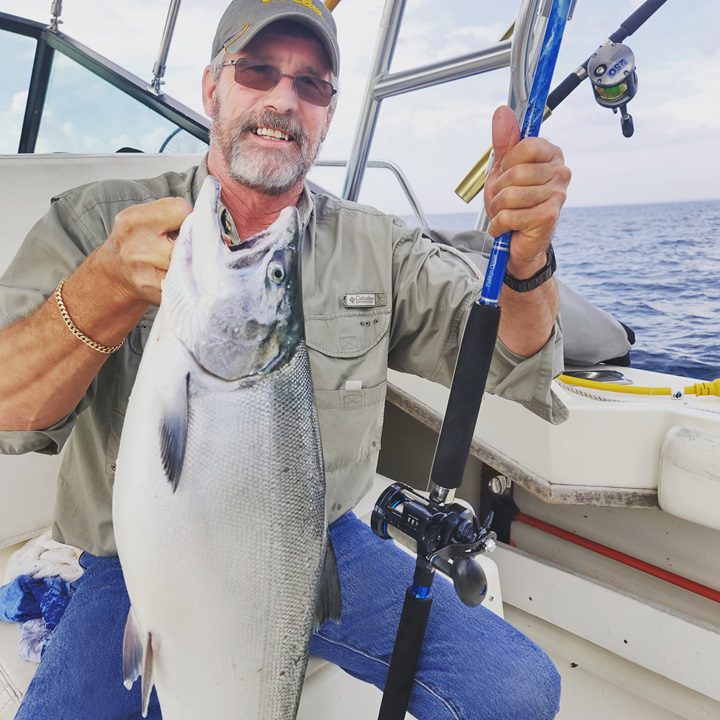
New user?
Lake Trout, native to Lake Michigan, are a prominent species that reproduce naturally and do not die after spawning. One particularly prolific area for Lake Trout is an offshore reef near Milwaukee, where their numbers surpass those of salmon. These fish are often targeted close to the bottom throughout the fishing season.
During summer, Lake Trout are typically found at depths of 80 to 120 feet. In the spring and fall, they can be caught close to shore, in waters as shallow as 10 feet. These fish vary in size, ranging from 2 to over 30 pounds, with many averaging between 25 to 30 pounds. The thrill of reeling in a Lake Trout from the deep is a memorable experience for any angler.
Lake Trout are highly regarded for their excellent taste, especially when smoked, making them a culinary delight. Smaller Lake Trout are also delicious when boiled in white soda, offering a unique and flavorful dining option.

Rainbow Trout are known for their acrobatic displays on Lake Michigan, often leaping as high as four feet out of the water when hooked. These lively fish are a joy to catch and taste fantastic on the grill. They can be caught throughout the season at various depths, but the best time to target them is offshore during the summer months.
Fishing for Rainbow Trout offshore means venturing up to 8 miles out into waters that are over 200 feet deep. To catch these fish, trolling at speeds of 2.5 to 3 miles per hour with baits in the top 60 feet of water is effective. When you encounter a school of Rainbow Trout, hookups can be frequent, but their energetic jumps often result in lost fish. Don't get discouraged—there are plenty more to catch. Spoons are commonly used to reel in these trout.
Rainbow Trout are considered the best-tasting trout in Lake Michigan, making them a prized catch for both their fight and their flavor.

The Milwaukee area is renowned for being one of the best places to fish for Brown Trout. These fish are actively targeted during the winter, early spring, and late fall. However, during the summer months, Brown Trout are less frequently caught unless there is a significant drop in water temperature. Their summer behavior remains somewhat of a mystery, with some theories suggesting they become nocturnal, while others believe they stay close to shore at the bottom in the coldest water they can find.
During the summer, anglers typically fish in waters deeper than 70 feet, possibly overlooking the Brown Trout closer to shore. For those specifically looking to catch Brown Trout, the best times are in winter, fall, and early spring, and a smaller boat can be particularly effective for these seasons.
Brown Trout offer a unique challenge and an exciting experience for anglers, making them a sought-after species in Lake Michigan's diverse fishing landscape.

The Chinook Salmon, commonly known as King Salmon, is a prized catch for many anglers, especially those fishing in Lake Michigan. Renowned for its impressive size, the King Salmon is the largest salmon species in Lake Michigan, making it a true bucket list fish for fishing enthusiasts.
Originally found throughout the North Pacific, particularly in Alaska and British Columbia, King Salmon have made their mark in Lake Michigan. Despite being a "Pacific" salmon, their presence and impact on Lake Michigan's fishing scene are undeniable, providing anglers with thrilling challenges and rewarding catches.

Coho Salmon make their presence known off the shores of Milwaukee starting in May and continuing through early June. During this period, the water temperatures range between a cool 40 to 54 degrees, making it an ideal environment for both large and small boats, as well as shore anglers, to catch these delicious fish. It is not uncommon to achieve limit catches when Coho Salmon are feeding voraciously.
These user-friendly Coho Salmon often form tight schools, providing anglers with fast-paced action and abundant catches. Although you won't encounter the line-burning "screamers" like their larger Chinook Salmon cousins, Coho Salmon offer plenty of excitement and are considered one of the best-eating salmonids in Lake Michigan.

Any individual attending the charting event must show proof of a valid Wisconsin Department of Natural Resources Fishing License.
To get started, visit the DNR Wisconsin Government website and Get Started on GoWild today!